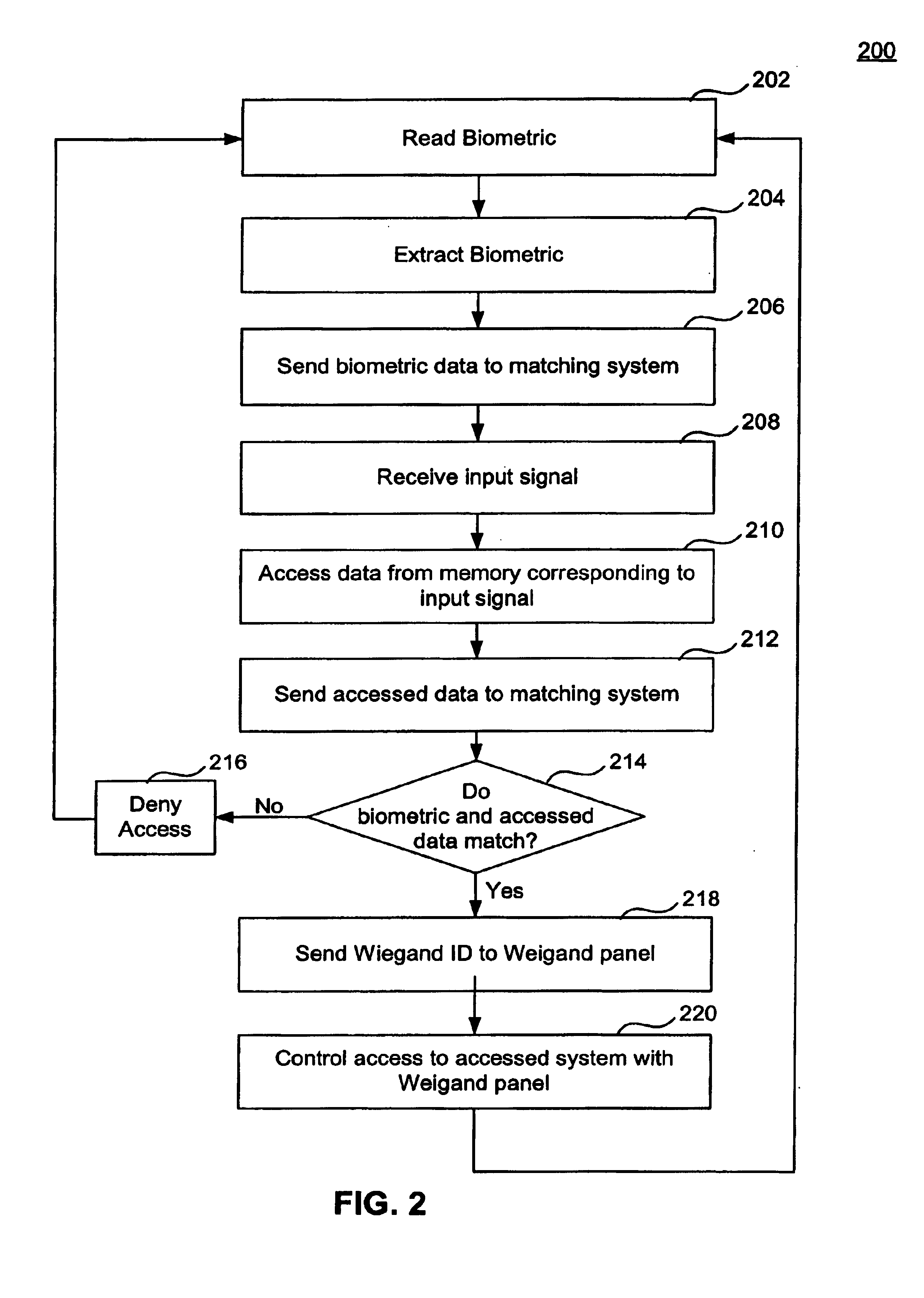System and methods for access control utilizing two factors to control access
a technology of access control and two factors, applied in the field of access control, to achieve the effect of reducing the amount of wiring installation
- Summary
- Abstract
- Description
- Claims
- Application Information
AI Technical Summary
Benefits of technology
Problems solved by technology
Method used
Image
Examples
Embodiment Construction
Overview and Terminology
[0017]Embodiments of a system and methods for access control of an accessed system utilize a two-factor requirement for admittance. One factor may be biometric data read and extracted from an individual wishing to gain access to the accessed system. The other factor may be an electronic key signal received at an input device of the access control system that is converted to an input signal. Through the requirement of two factors there is a much lower change of false positives or false negatives during access control.
[0018]In some embodiments, the input signal is used to access correlating biometric data in a memory. Then, the extracted live biometric data and the stored biometric data are compared to generate a matching result signal. The matching result signal is transmitted to a Wiegand access control panel to control access to the accessed system.
[0019]In other embodiments, the extracted live biometric data is compared to biometric data stored in a memory ...
PUM
 Login to View More
Login to View More Abstract
Description
Claims
Application Information
 Login to View More
Login to View More - R&D
- Intellectual Property
- Life Sciences
- Materials
- Tech Scout
- Unparalleled Data Quality
- Higher Quality Content
- 60% Fewer Hallucinations
Browse by: Latest US Patents, China's latest patents, Technical Efficacy Thesaurus, Application Domain, Technology Topic, Popular Technical Reports.
© 2025 PatSnap. All rights reserved.Legal|Privacy policy|Modern Slavery Act Transparency Statement|Sitemap|About US| Contact US: help@patsnap.com



